
Falabella Atonada with Equuleus Thriller (by Limelight's Point Break)
Photo: Ray Mumford
Falabella horses are not difficult to look after.
Almost every day we get a call from someone who has acquired a Falabella and wants to know how to look after it!
If you have bought from a reputable breeder you will have been given advice on feeding, worming etc.
If you have bought at auction (for example) you will possibly be ‘in the dark’, without a clue how to keep your horse happy, healthy and alive!

Equuleus Jessica.
By Micatos Montana ex Charlotte of Kilverstone.
Great, great grand daughter of Falabella Al Graten
Jessica is pictured here with Mrs Brenda Sutcliffe whose daughter Helen won Falabella Al Graten in a newspaper competition in 1974.
Photo Ray Mumford
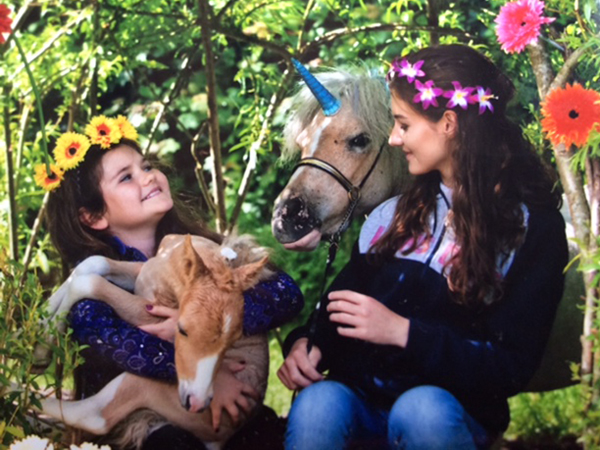
Most Falabellas enjoy human company and particularly that of children - here Minette of Fort becomes a unicorn for a day,
in the company of her colt foal - Atlas of Fort, and Miss Alice and Bojena Lewis.
Photo courtesy: Sarah Bourne
It is unacceptable to keep one horse on its own -
As a herd animal it requires the company of its own kind in order to thrive.

Falabella Chico
Chico and a friend at Kilverstone Latin American Wildlife Park/ New World Zoo in 1977.
Photo: Studio Five
courtesy: The Lady Rosamund Fisher
It is actually illegal in Sweden to keep just one horse - other countries can learn from this high example of animal welfare.
A Falabella horse can be kept with a big horse but common sense must be used when introducing them to each other.
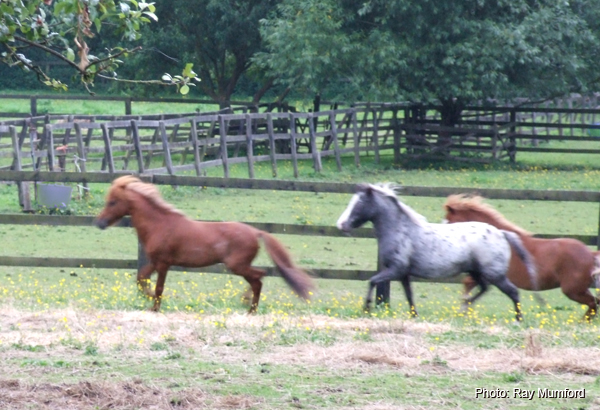
Our horses are kept in as natural a way as possible, free to graze and browse the great diversity of grasses, herbs, mosses, fruits, tree barks and leaves that grow on
our organic meadows here in Breckland.
The following paragraphs are intended as guidelines for the complete novice owner, and for the experienced ‘big horse’ owner who can
frequently get it wrong with a Falabella horse.
If you are new to Falabellas, do not assume your vet will know it all.
Many vets in this country are not aware of conditions which are peculiar to miniatures.
The testicles of Falabellas can be retained inside far longer than is normal for big horses.
They can appear anaemic in blood tests when compared to big horses but this is not unusual.
Consult a book on Falabellas for normal blood parameters but be aware that anaemia can also be the result of a heavy worm burden.
These are just two examples but there are many more.
Stables
If you stable your horse on straw you must provide ad-lib hay or he might eat his bedding and get impaction colic.
We know of a number of cases of this happening and more than one fatatality.
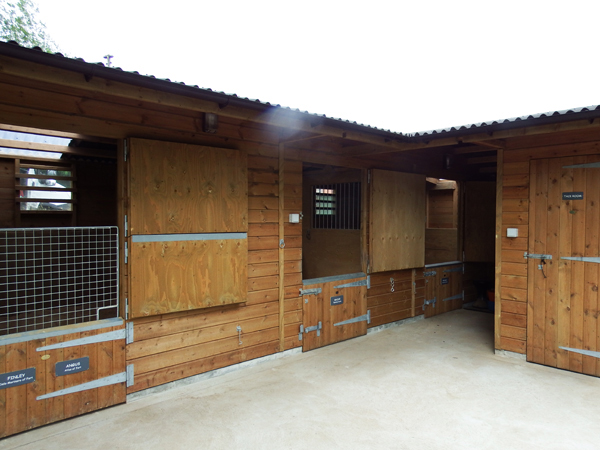
No horse should be stabled for more than 12 hours a day. Excercise aids digestion thereby helping to prevent colic.
It also alieviates boredom and that means a happier, more contented horse.
Prime Stabling (above) makes a highly suitable stable for Falabella horses and offers variable door heights.
photo:- courtesy: Pauline Young
All horses should have a comfortable, dry place to lay down, whether it be stable or field shelter.
'It is important for the bed to be comfortable and supportive not just to be kind to your horse, although that is a very good reason.
Horses need to lie down to get the deep, REM (rapid eye movement) sleep they cannot get standing up.
Horses need an average of 60 minutes of REM sleep every 24 hours, or like humans they will become tired, grumpy and ultimately exhausted'.
Information: Bedmax Shavings.
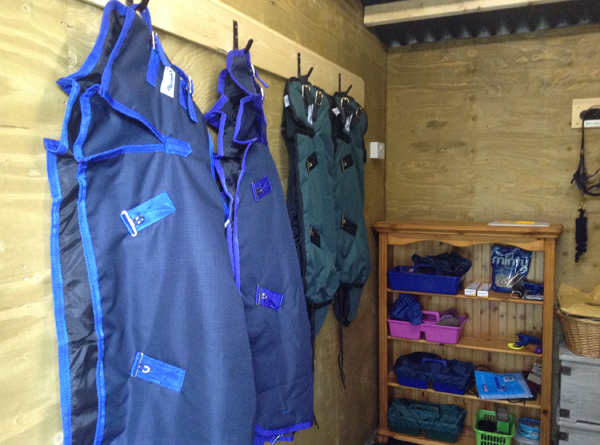
A beautiful and practical tack-room built by Prime Stabling.
photo:- courtesy: Pauline Young
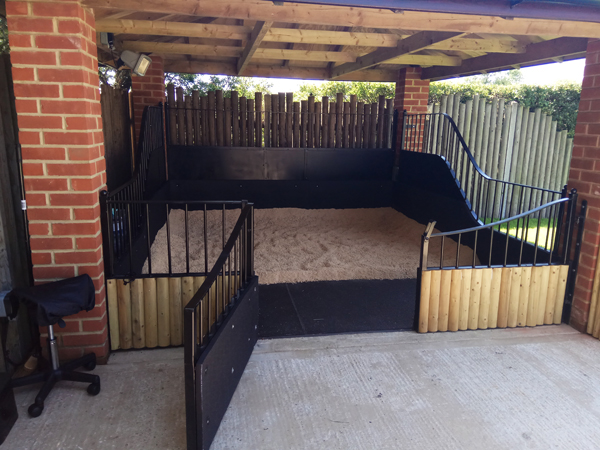
A lovely, open-plan stable for two Falabella friends.
Photo:- Courtesy: Claire Humphrey.

Above and below are the beautiful stables built at the International Culture Centre, Java, Indonesia for the eight Falabellas they purchased from us.
A lovely design suitable for a hot, humid climate.
Photo: courtesy Mr Kim Sang
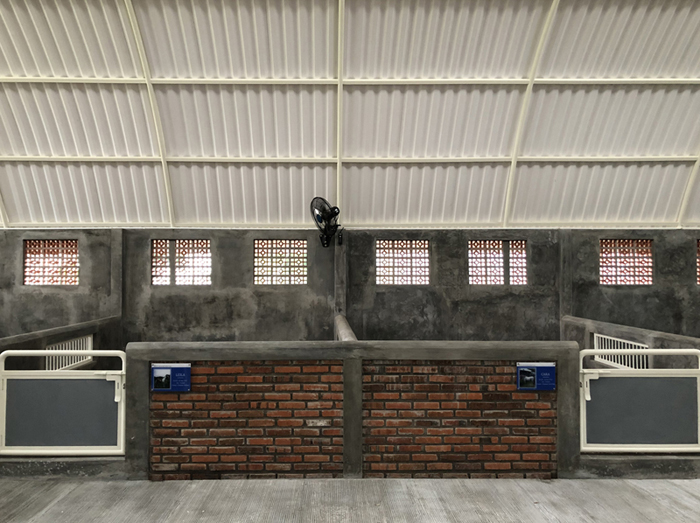
Photo: courtesy Mr Kim Sang

Photo: courtesy Mr Kim Sang

Horse showers built by the International Culture Centre, Java, Indonesia.
Photo: courtesy Mr Kim Sang

Never use a hay-net.
There is no such thing as a ‘safe’ hay-net for miniatures and sooner or later you will have a disaster.
Hay bags are the safer option.
Equuleus Cecilia
photo:- courtesy: Pauline Young
Falabellas sometimes don't drink enough, which can result in impaction colic.
Provide a salt/mineral lick at all times to encourage drinking.
In very cold weather your horse will appreciate a drink of warm water.
They will not be happy to drink warm water with algae-growth on it in summer.
Water bowls must be regularly cleaned out.
Hay keeps horses warm in the winter as it ferments in the hind gut creating heat.
Good quality hay should form a large percentage of your horse’s diet.
We feed hay all year round as our ground is very sandy.
If forced to graze on our very short grass our horses would develop sand-impaction colic.
We prefer to have large hay bills than dead horses!
We use psyllium (imported from India) in our horses food several times a week.
This natural husk binds any sand remaining in the intestines and carries it safely through the body.
We now believe that a weekly feed with psyllium added to it could prevent the majority of equine colics, even if you do not have particularly sandy land,
as some soil is inevitably ingested when horses graze, and impaction colics usually build up over a period of time.

Atlas of Fort (aka Angus) and Cielo Marinero of Fort (aka Finley) demonstrating what an excellent shelter a pig arc can make for Falabellas.
photo :- courtesy Pauline Young
They can cope well in cold climates providing they have access to ad-lib hay, a field shelter, ice-free water and sufficient rugs.
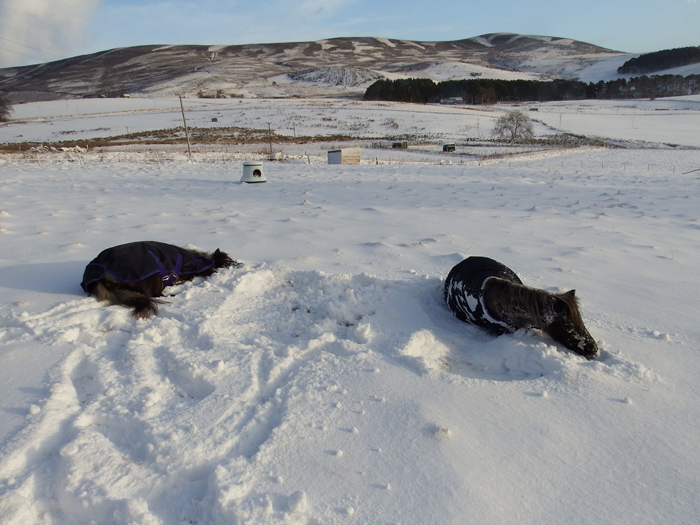
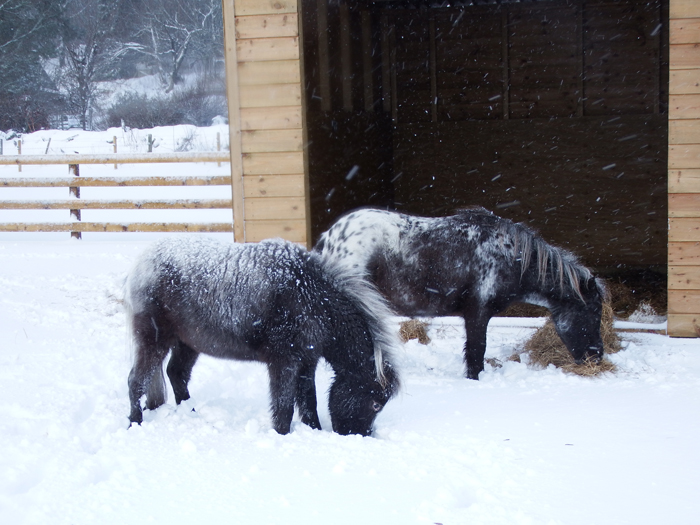
Equuleus Cecilia and Equuleus Cavatina, clearly enjoying the snow in Aberdeenshire.
photos :- courtesy Pauline Young
In hot climates Falabellas will need to be clipped but if the nights are cold, they will require rugs.
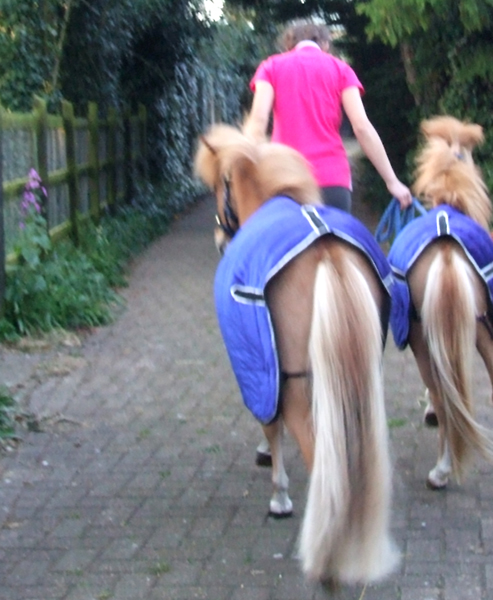
Equuleus Nashwan and Equuleus Excalibur, clipped, rugged and leaving the Equuleus Falabella Stud, bound for Dubai.
Photo: Ray Mumford
Too much food and certainly the ‘wrong’ type of food can cause the agonising foot problem Laminitis.
Try to feed low sugar, low starch and high fibre.
All our horses feet are trimmed six-eight weekly, depending on the seasonal hoof growth.
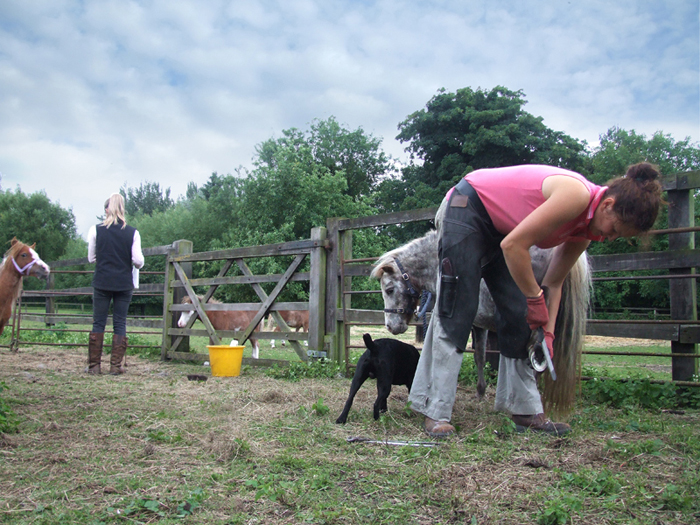
Our farrier Lisa O'Shaughnessy and her assistant Heidi Holder.
Photo: Ray Mumford
Lice will always be present in thick winter coats but are tiny and not easily seen.
When miniature horses are itching and rubbing, suspect lice first.
Frequent use of an organic product (designed to dry out the exoskelleton) should control the problem.
Lice are a winter/spring problem especially as they love thick winter coats.
Never leave Falabellas unattended wearing head-collars.
If they get caught by a tree branch (for example) they might not break and the horse could come to harm.
Be aware that young horses might try to play with a bucket and the handle could slip over it's head causing it to panic.
It is best to remove handles if possible.
Worming is especially important for Falabellas – they do not get ‘miniature’ worms!
We pick up all droppings from our fields daily to help reduce reinfestation between wormings.
It is important to vaccinate for tetanus and when your vet comes to do your horse’s annual booster you can ask that he/she checks and rasps your horse’s teeth at the same time.
Our horses are vaccinated for tetenus and equine influenza from six months of age. Prior to that they gain immunity from their dam's colostrum, obtained the first time they suckle.
With common sense, a bit of reading and a degree of luck, you might only need to see your vet once a year.
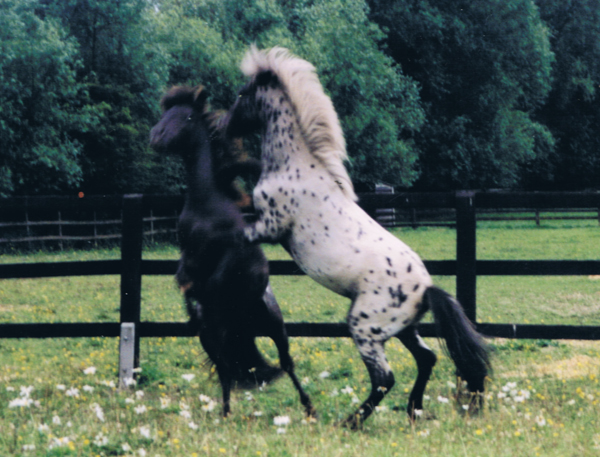
Limelight's Lord of the Rings and Equuleus Kashmir (both aged two) play-fighting.
Photo: Kamila Lewis
Falabella horses are highly intellegent and easy to train - the young males are just as sweet and gentle as their female counter-parts.
Testosterone levels rise rapidly in colts (as they mature) however, and that means that even the kindest stallion can be unpredictable once in a while.
Most male Falabellas will lead happier lives as geldings and only truly exceptional colt foals should be considered as future herd sires.
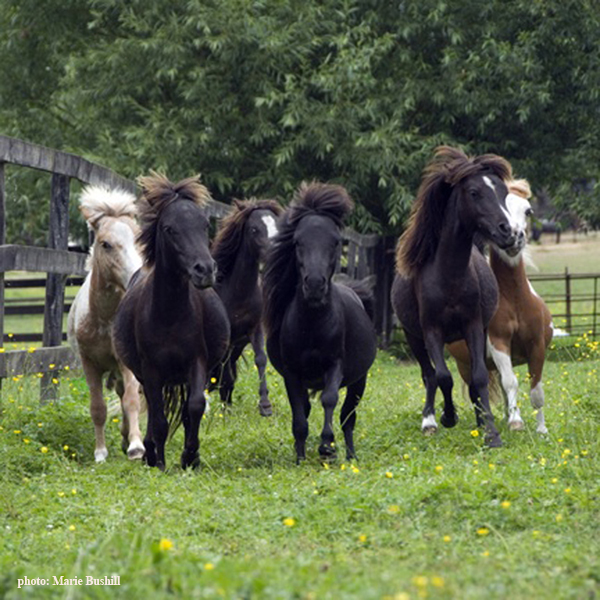
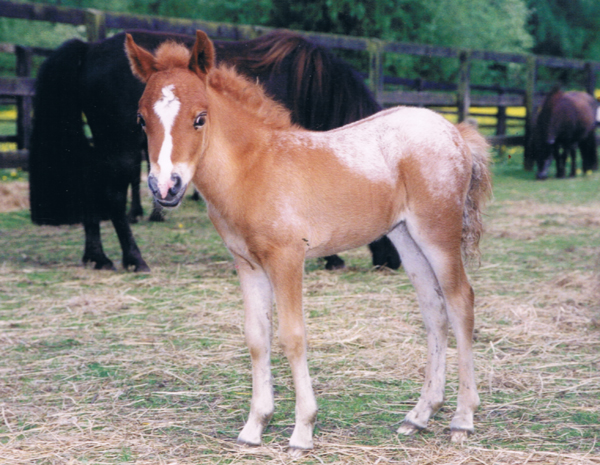
Equuleus Fantastica
By Falabella Yabito ex Falabella Prosapia
Photo: Limelights Animals
Pregnancy and lactation are a tremendous drain on a mare and it is unethical to breed her annually just because she might be capable of conceiving every year.
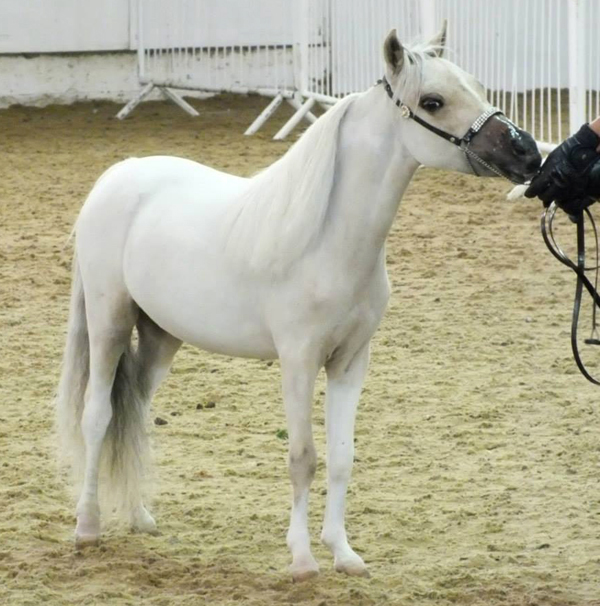
Minette of Fort, a yearling filly by Limelight's Indian Warrior ex Falabella Niebla.
Photo courtesy: Stella Dutchyn
Home
